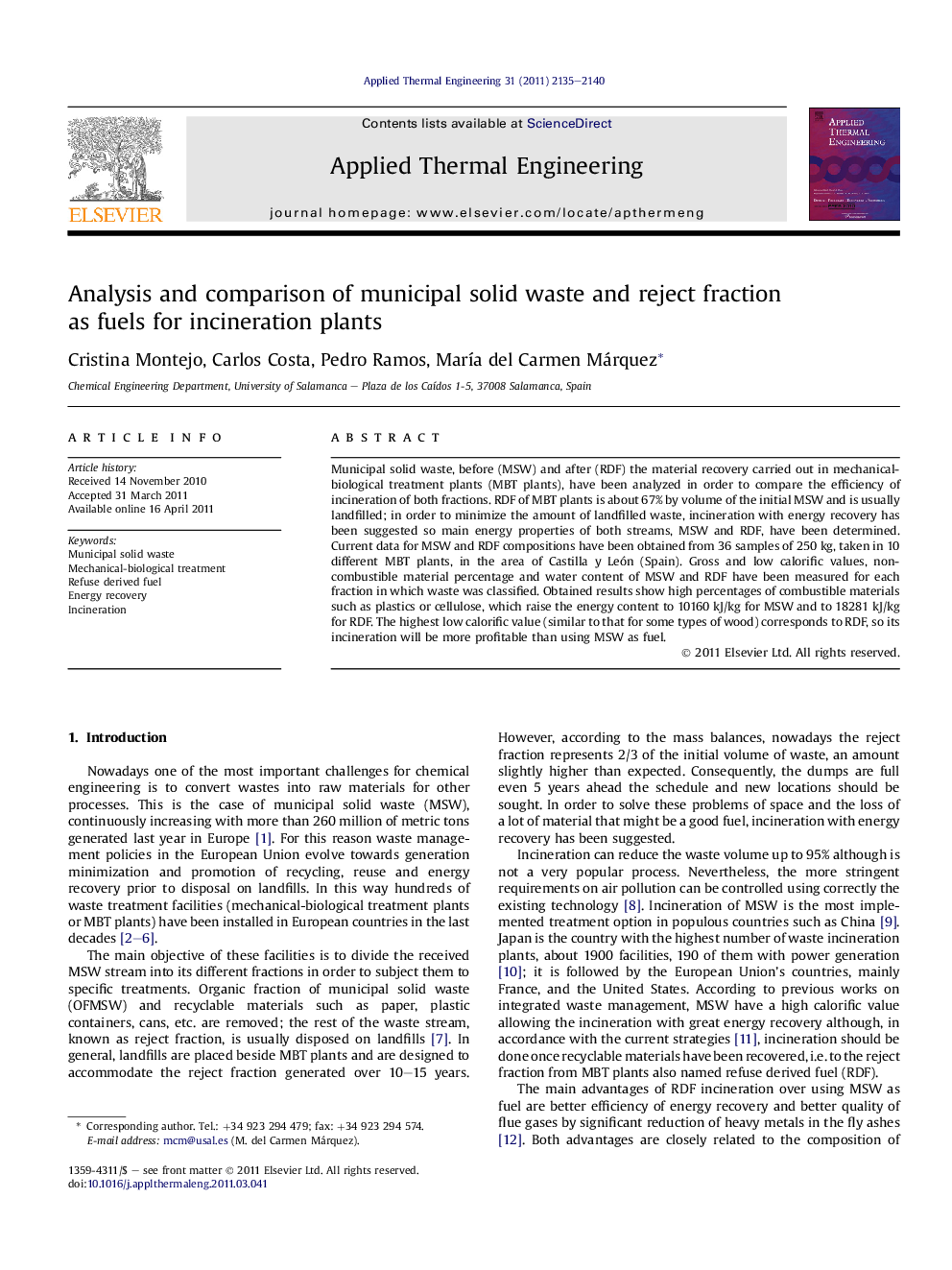| Article ID | Journal | Published Year | Pages | File Type |
|---|---|---|---|---|
| 647868 | Applied Thermal Engineering | 2011 | 6 Pages |
Municipal solid waste, before (MSW) and after (RDF) the material recovery carried out in mechanical-biological treatment plants (MBT plants), have been analyzed in order to compare the efficiency of incineration of both fractions. RDF of MBT plants is about 67% by volume of the initial MSW and is usually landfilled; in order to minimize the amount of landfilled waste, incineration with energy recovery has been suggested so main energy properties of both streams, MSW and RDF, have been determined. Current data for MSW and RDF compositions have been obtained from 36 samples of 250 kg, taken in 10 different MBT plants, in the area of Castilla y León (Spain). Gross and low calorific values, non-combustible material percentage and water content of MSW and RDF have been measured for each fraction in which waste was classified. Obtained results show high percentages of combustible materials such as plastics or cellulose, which raise the energy content to 10160 kJ/kg for MSW and to 18281 kJ/kg for RDF. The highest low calorific value (similar to that for some types of wood) corresponds to RDF, so its incineration will be more profitable than using MSW as fuel.
► MSW and RDF composition of 10 MBT plants have been obtained on 36 samples. ► Main energy properties of both streams have been determined. ► RDF as fuel shows higher GCV and LCV, lower moisture and lower ashes amount than MSW. ► Both, MSW and RDF, are good fuels although RDF incineration is more profitable than the MSW’s.
